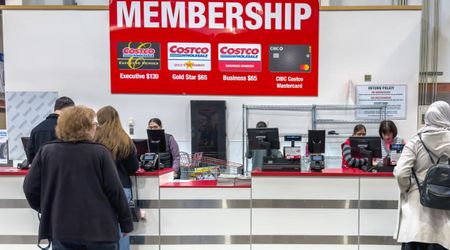Why US Consumers Are Switching to Digital Wallets to Tackle The Cost of Living Crisis

There's no denying that with the rise of e-commerce experiences, e-wallets have made it easy for consumers to make purchases. Tech giants like Google, Apple, and Samsung have already invested in proper digital solutions enabling consumers to pay without swiping a card. According to a report by Worldwide Collaboration, the use of mobile wallets across demographics has risen by 11% between the third quarter of 2022 and the first quarter of 2023. While the number is on the rise, there are still a few reasons why customers don't want to use digital wallets. One such reason is that customers have to pay either a flat fee, a percentage of the bill or some combination of both to use digital wallets like PayPal. However, the general sentiment towards digital wallets is positive.

The growing cost of living has resulted in customers switching to digital wallets. Bruce Richardson, a mobile strategy consultant at SAP Emarsys says, "Many have turned to digital wallets as a result; 50 percent of UK shoppers agreed that there was ‘no need for a physical wallet now that I have a mobile wallet'," via The Fintech Times. "To cut through these concerns, brands need to make customers feel that they’re making specific efforts to drive down cost – and to tie that sentiment back to their brand. Through digital wallets, they’re able to their customers in tackling the cost-of-living crisis – delivering personalized offers and convenient experiences directly into that shopper’s pocket," he adds.
This cost of living has resulted in consumers seeking cost-effective alternatives for financial transactions. According to Richardson, the year 2024 is pivotal for this sector. "Projections indicate a remarkable 77 percent increase in digital wallet transactions, exceeding $ 16 trillion by 2028," he said.
Bob Legters, SVP of consumer products at Paysafe, said that around 69% of consumers who changed their payment habits because of the rising cost of living were using digital wallets more regularly as compared to the year prior. He also talked about how offering consumers financial insights into their spending accelerated the use of digital payment modes. "By offering these insights, digital wallets can help consumers stay on budget and make their money stretch further – a boon as discretionary spending tightens," he added.
Wells Fargo, Bank of America, JPMorgan, and others, will push into the digital wallet space in the second half of this year to take on Apple Pay and PayPal. This move inches the US closer to the dreaded CBDC. https://t.co/rheMC15r5U
— The Free Thought Project 2.0 (@TheFreeThought2) January 24, 2023
Another survey by Forbes Advisor uncovers how Americans are using their digital wallets. The survey revealed that more than half of Americans were using digital wallet apps and services. The survey also revealed that 69% of respondents were using PayPal, making it the most popular digital wallet in the US. The survey also highlighted how digital wallets are now eclipsing traditional payment methods. Another interesting revelation is that customers were equally likely to pay through their digital wallets for both a small payment and a large purchase.
It's safe to say the consumer preference for digital payments is growing. While this method is the most convenient, it's important to note that it has also been seen that consumers who used digital wallets were more likely to lose track of their spending and blow through their budgets. Many businesses have also noticed the same thing. "...People tend to spend more with digital wallets," said Simas Simanauskas, chief business officer at financial platform ConnectPay. "This means that if you can drive more spending in an environment where the cost of living keeps rising while decreasing your operational costs — then you have your golden goose," said Simanauskas.
























